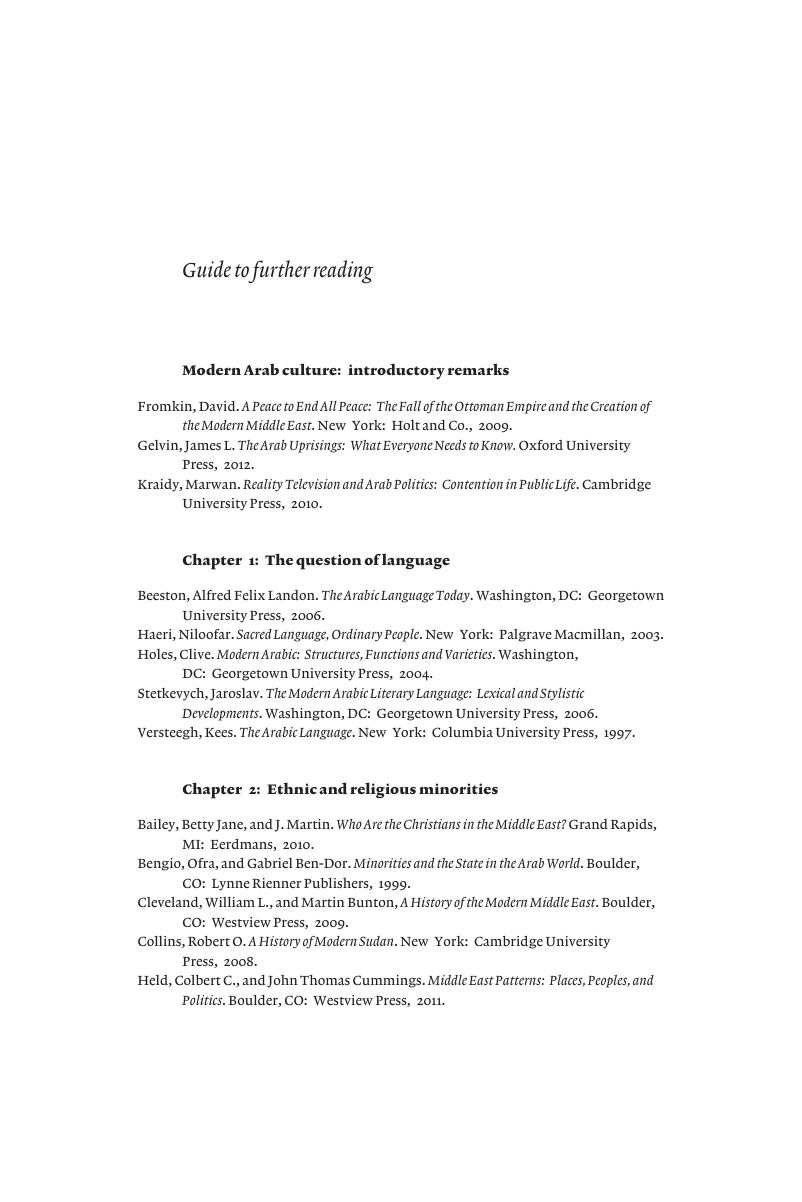Book contents
- Half title page
- Cambridge Companions to Culture
- Title page
- Copyright page
- Contents
- Contents
- Contents
- Contents
- Contributors
- Book part
- A note on terminology and transliteration
- Chronology
- Modern Arab culture: introductory remarks
- 1 The question of language
- 2 Ethnic and religiousminorities
- 3 Nahda:the Arab project of enlightenment
- 4 Law
- 5 Poetry
- 6 Narrative
- 7 Music
- 8 Cinema and television
- 9 Theater
- 10 Art
- 11 Architecture
- 12 Humor
- 13 Folklore
- 14 Food and cuisine
- 15 Migration and diaspora
- Glossary
- Bibliography
- Index
- References
Bibliography
Published online by Cambridge University Press: 05 April 2015
- Half title page
- Cambridge Companions to Culture
- Title page
- Copyright page
- Contents
- Contents
- Contents
- Contents
- Contributors
- Book part
- A note on terminology and transliteration
- Chronology
- Modern Arab culture: introductory remarks
- 1 The question of language
- 2 Ethnic and religiousminorities
- 3 Nahda:the Arab project of enlightenment
- 4 Law
- 5 Poetry
- 6 Narrative
- 7 Music
- 8 Cinema and television
- 9 Theater
- 10 Art
- 11 Architecture
- 12 Humor
- 13 Folklore
- 14 Food and cuisine
- 15 Migration and diaspora
- Glossary
- Bibliography
- Index
- References
Summary

- Type
- Chapter
- Information
- The Cambridge Companion to Modern Arab Culture , pp. 315 - 321Publisher: Cambridge University PressPrint publication year: 2015



